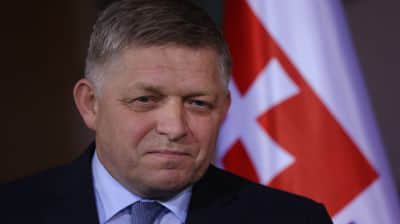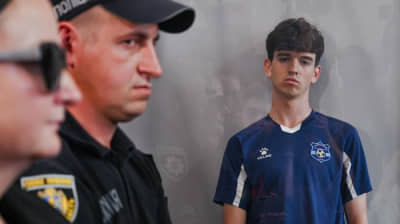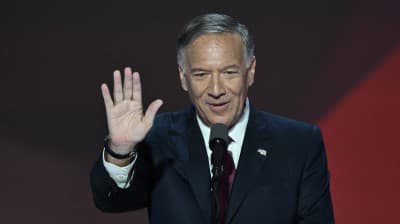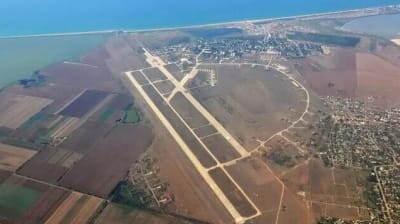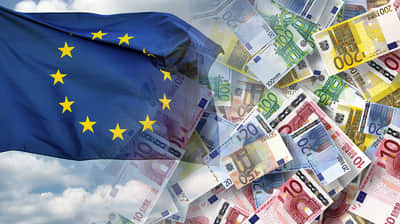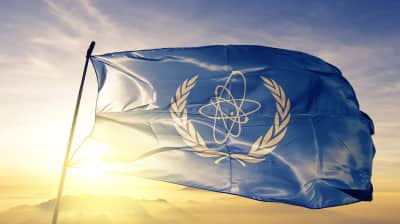Time journalist in new book on Zelenskyy: He lived on tinned food and chocolate and looked like a walking corpse

Time magazine reporter Simon Shuster has described the ascetic life of Ukrainian President Volodymyr Zelenskyy's team in a bunker in the early days of Russia's full-scale invasion in a new book.
Source: excerpts from Shuster's book about Zelenskyy, released by The Telegraph
Details: Shuster mentions in particular that in the spring of 2022, on day 55 of the full-scale Russian invasion, Zelenskyy asked when he planned to finish his book about him. Shuster replied that he wanted to chronicle the first year of the war and then get the book published. "You think the war will not be over in a year?" Zelenskyy wondered back then.
The Telegraph has published an exclusive excerpt from the book in which Shuster reveals how the war has changed the Ukrainian president – "and not entirely for the better".
Shuster said the president and his team had allowed him to spend a lot of time on Bankova Street [where the Ukrainian President’s Office is located – ed.] during the first year of the full-scale invasion.
"At times it felt almost normal despite the air-raid sirens. We cracked jokes, drank coffee, but it was also a time of exhaustion and fear," the journalist wrote.
Shuster captures the life of the president and his team in the bunker at the beginning of the full-scale invasion.
Quote: "The nights were hardest for Zelenskyy. His bed was barely wide enough to toss and turn. The buzzing from his phone rarely stopped.
‘In those first days, I would wake everybody up,’ he said. ‘I didn’t have the right to sleep until I knew what strikes had landed where.’ Then as early as 4.50am, Zelenskyy would be requesting an update.
No one gave in to despair during that early phase. But eventually all of them crashed. There was not much to eat. Sweets got passed around at meetings, and tinned meat with stale bread was in the communal kitchen. One minister told me he survived for days on chocolate.
Zelenskyy’s face became sallow. He complained about the lack of sunlight and fresh air. Some of his staff became concerned. His legal aide recalls that he resembled a walking corpse. ‘A living person cannot look like that,’ she said."
More details: As Shuster notes, life in the bunker eventually settled into a more manageable routine. The morning videoconference shifted to 07:00, giving the president plenty of time to have breakfast - "invariably, fried eggs". The staff were served hot food: sausages, potato dumplings, and goulash.
"Zelenskyy and his team kept a supply of alcohol even after the government banned its sale, and he would on occasion pour wine for the aides who joined him for a meal. There were also dumbbells and a bench press that Zelenskyy made a habit of using, often at night. Later they put in a ping-pong table. Few could beat him," the book reads.
Sometimes Zelenskyy would invite his staff to watch a film, often the latest offering from Hollywood. Zelenskyy could no longer watch Soviet-era comedies. "They revolt me," he said.
Shuster described how Zelenskyy's associates often called him Volodia [a colloquial form of Volodymyr] at the beginning of the full-scale war and would remain seated when he walked into the room. They later switched to addressing him formally as Volodymyr Oleksandrovych.
Shuster noted that Zelenskyy had been downplaying the risk of a full-scale invasion for weeks and rejected advice from the military command to fortify the border.
Later that morning, when the invasion began, some government officials packed up and fled. Most of the runaways were from the Security Service of Ukraine.
Several European leaders had offered to help Zelenskyy escape, but he found such offers "a bit offensive," the book says. "I was tired of this," the president stressed later.
The book also says Zelenskyy was "pale and tired, with the early stubble of his wartime beard beginning to show," and "did not have much faith in his allies to save him, and the pessimism showed". "This may be the last time you see me alive," Zelenskyy told the Europeans.
Instead of asking to be rescued, he was demanding they answer a question that Ukraine had been asking for decades: would Ukraine ever be allowed to join the European Union? His speech, which lasted only about five minutes, had more impact than months, if not years, of debate about the Russian threat, Shuster writes.
The journalist also recalls how he was invited on a trip with Zelenskyy to just-liberated Kherson. The president's security was opposed to the trip.
"My security was 100 per cent against it. On my part, it’s a bit reckless," Zelenskyy told Shuster.
When asked why he was going, the president replied: "It’s the people. Nine months they’ve been under occupation. Yes, they’ve had two days of euphoria. Soon they are going to fall into a depression."
Shuster also recalls seeing Zelenskyy a few days before Christmas 2022 in Washington, during his first trip abroad since the invasion. The journalist saw the president briefly as he hurried through the Capitol.
"His gait looked leaden, fixed in the shoulders, like a bulldog headed for a fight. The war had not ended, not even close. But the man at the centre of it had finished his transformation into a wartime leader," he writes.
Learn more: 24 February 2022 reconstructed. Episode 1. Preparing for the Russian invasion
24 February 2022 reconstructed. Episode 3. Facility No. 1, or All power in Zelenskyy's bunker
24 February 2022 reconstructed. Episode 4. Russia's invasion: fronts, people and cities
Support UP or become our patron!
